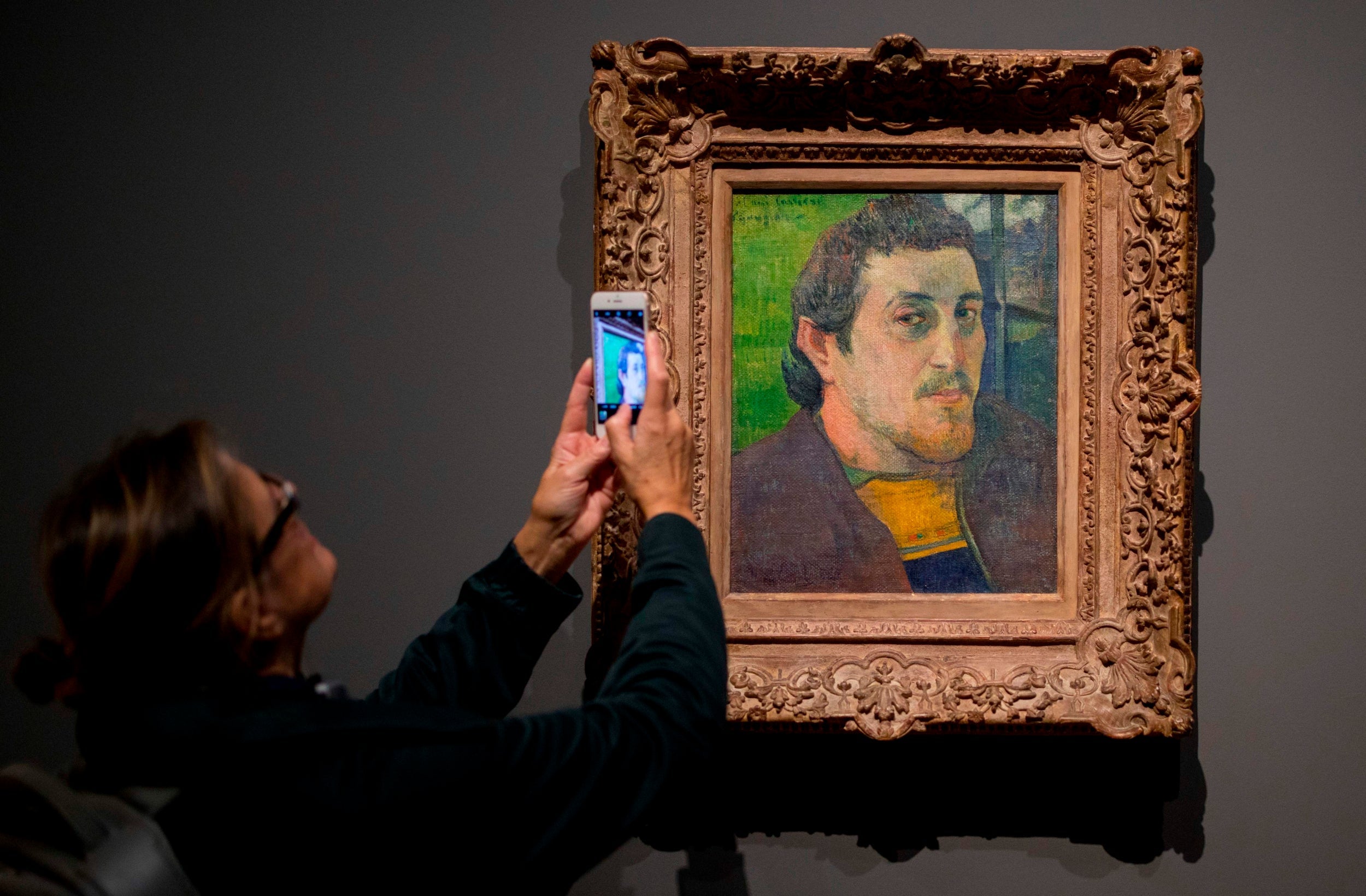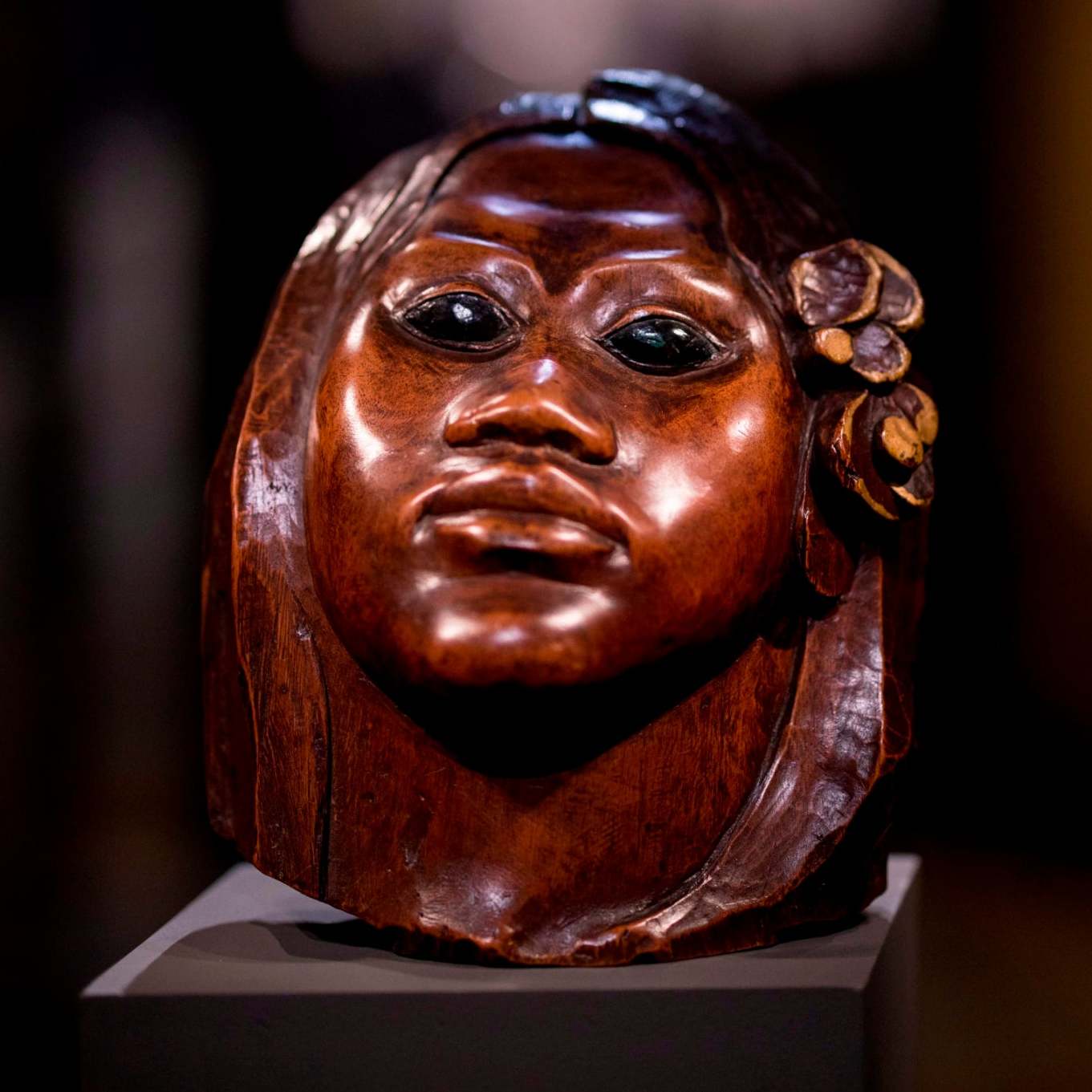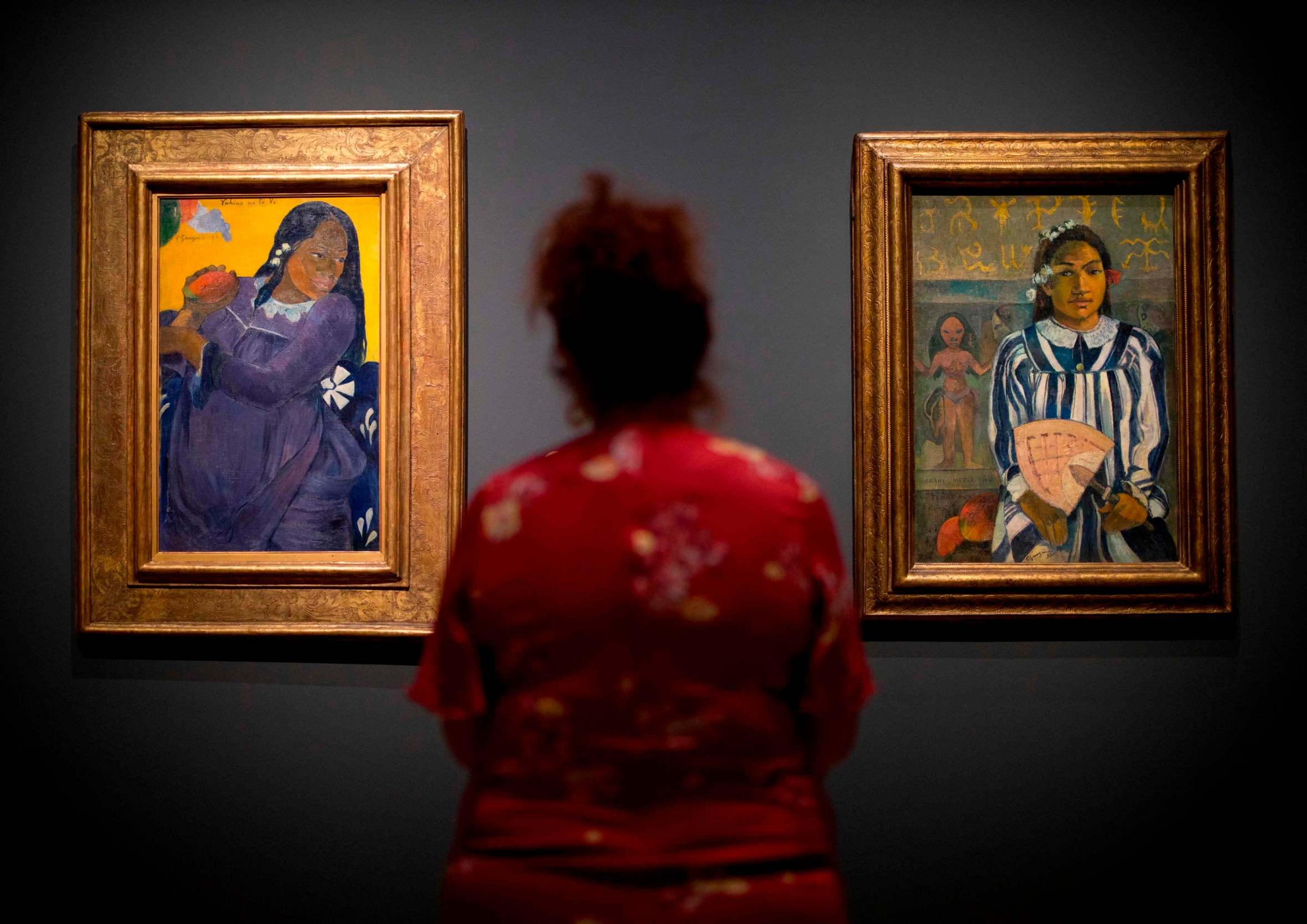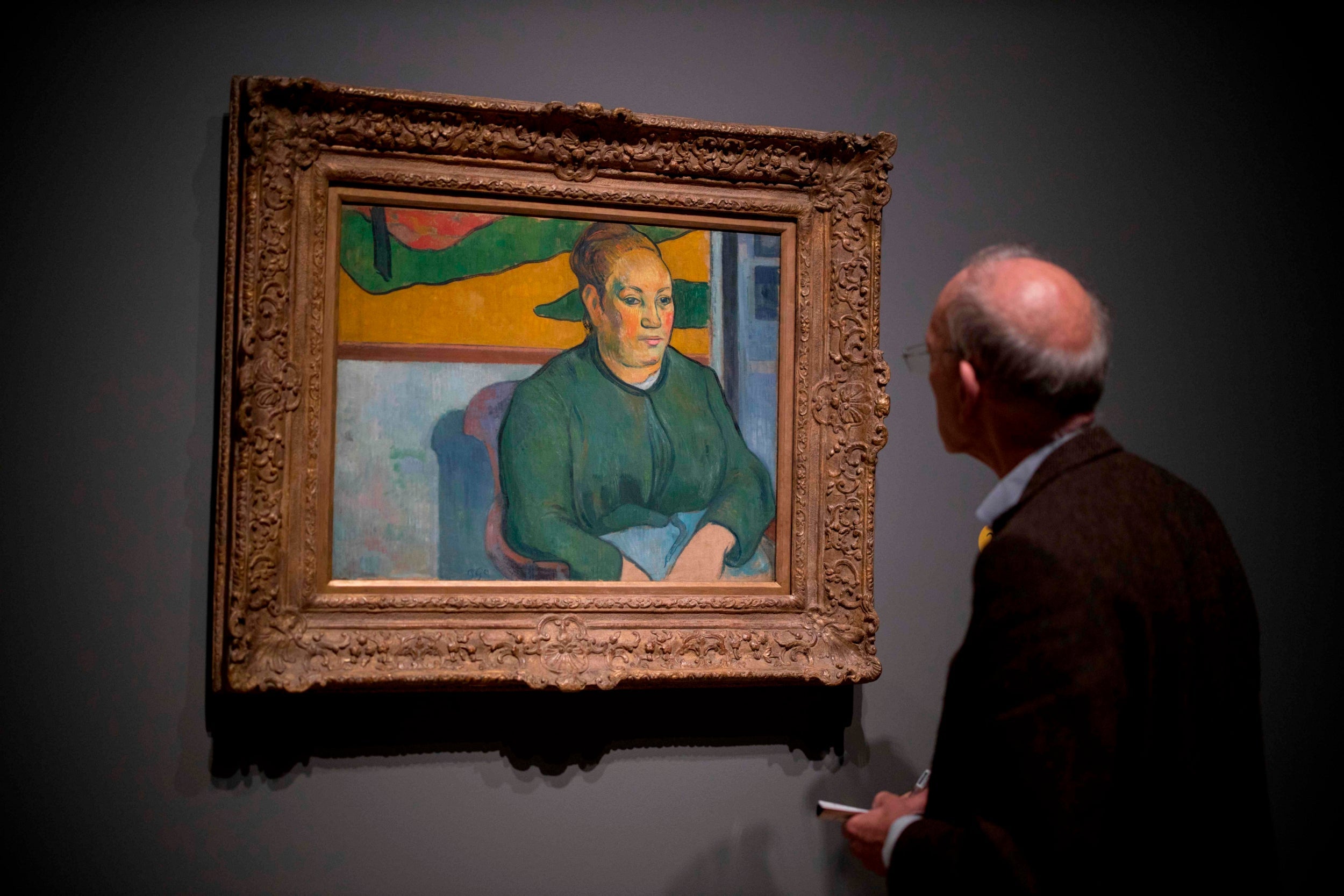The Independent's journalism is supported by our readers. When you purchase through links on our site, we may earn commission.
More than a century after his death, has the time finally come to cancel Gauguin?
From entering sexual relationships with young girls, to using his status as a westerner to exploit, Paul Gauguin is a controversial figure. So why do we keep making excuses, Farah Nayeri asks

Your support helps us to tell the story
From reproductive rights to climate change to Big Tech, The Independent is on the ground when the story is developing. Whether it's investigating the financials of Elon Musk's pro-Trump PAC or producing our latest documentary, 'The A Word', which shines a light on the American women fighting for reproductive rights, we know how important it is to parse out the facts from the messaging.
At such a critical moment in US history, we need reporters on the ground. Your donation allows us to keep sending journalists to speak to both sides of the story.
The Independent is trusted by Americans across the entire political spectrum. And unlike many other quality news outlets, we choose not to lock Americans out of our reporting and analysis with paywalls. We believe quality journalism should be available to everyone, paid for by those who can afford it.
Your support makes all the difference.“Is it time to stop looking at Gauguin altogether?”
That’s the startling question visitors hear on the audio guide as they walk through the Gauguin Portraits exhibition at the National Gallery in London. The show, which runs through 26 January, focuses on Paul Gauguin’s depictions of himself, his friends and fellow artists, and of the children he fathered and the young girls he lived with in Tahiti.
The standout portrait in the exhibition is Tehamana Has Many Parents (1893). It pictures Gauguin’s teenage lover, holding a fan.
The artist “repeatedly entered into sexual relations with young girls, ‘marrying’ two of them and fathering children”, reads the wall text. “Gauguin undoubtedly exploited his position as a privileged westerner to make the most of the sexual freedoms available to him”.
Born in Paris, the son of a radical journalist, Gauguin spent his early years in Peru before returning to France. He took up painting in his twenties, while working as a stockbroker, a profession he would soon give up – along with his wife and children – to make art full time. He set sail for Tahiti in 1891, searching for the exotic surroundings he had known as a boy in Peru. Gauguin spent most of the 12 remaining years of his life in Tahiti and on the French Polynesian island of Hiva Oa, cohabiting with adolescent girls, fathering more children and producing his best-known paintings.
In the international museum world, Gauguin is a box-office hit. There have been a half-dozen exhibitions of his work in the past few years alone, including important shows in Paris, Chicago and San Francisco. Yet in an age of heightened public sensitivity to issues of gender, race and colonialism, museums are having to reassess his legacy.
A couple of decades ago, an exhibition on the same theme “would have been a great deal more about formal innovation”, according to Christopher Riopelle, a co-curator of the National Gallery show. Now, everything must be viewed “in a much more nuanced context”.
“I don’t think, any longer, that it’s enough to say, ‘Oh well, that’s the way they did it back then,’” he says.

Riopelle describes Gauguin as “a very complicated person, a very driven person, a very callous person” and says he was “disappointed” that his overwhelming urge to make art “led him to hurt or use so many people badly”.
The show was co-produced with the National Gallery of Canada in Ottawa, Ontario, and opened in Ottawa in late May. A few days before the opening, the museum’s newly appointed director, Sasha Suda, and the exhibition’s curators decided to edit some of the wall texts after touring the show. Nine labels were changed to avoid culturally insensitive language, according to the museum’s press office.
In Ottawa, the title Head of a Savage, Mask was shown with an extended label explaining that the words ‘savage’ and ‘barbarian’, “considered offensive today, reflect attitudes common to Gauguin’s time and place”. Elsewhere, his “relationship with a young Tahitian woman” was changed to “his relationship with a 13- or 14-year-old Tahitian girl”.
Suda said that out of 2,313 feedback cards submitted by visitors at the Canadian exhibition, about 50 were complaints about Gauguin and about the museum programming.
The show should “have addressed these issues in a more open and transparent way that connected with contemporary audiences”, Suda said in an interview. Addressing “blind spots” in the work of historical artists “could make those artists more relevant”, she added.

To other museum professionals, reexamining the lives of past artists from a 21st-century perspective is risky because it could lead to the boycott of great art.
“The person, I can totally abhor and loathe, but the work is the work,” says Vicente Todoli, who was Tate Modern’s director when it staged a major Gauguin exhibition in 2010, and is now the artistic director of the Pirelli HangarBicocca art foundation in Milan.
“Once an artist creates something, it doesn’t belong to the artist anymore: It belongs to the world,” he says. Otherwise, he cautions, we would stop reading anti-Semitic author Louis-Ferdinand Celine, or shun Cervantes and Shakespeare if we found something unsavoury about them.
Yet Ashley Remer, a New Zealand-based American curator who in 2009 founded girlmuseum.org, an online museum focused on the representation of young girls in history and culture, insists that in Gauguin’s case the man’s actions were so egregious that they overshadow the work.
“He was an arrogant, overrated, patronising pedophile, to be very blunt,” she says. If his paintings were photographs, they would be “way more scandalous” and “we wouldn’t have been accepting of the images”.
Remer questions the constant exhibitions of Gauguin and Austrian artist Egon Schiele, who also depicted nude underage models, and the ways those shows were put together. “I’m not saying take down the works: I’m saying lay it all bare about the whole person,” she says.
Gauguin remains a tourist draw in Polynesia and the South Pacific. There is even a luxury cruise line that tours the region named after him. But to many locals, the painter’s cliched representations of lush, exotic islands full of dusky maidens with no voice or identity are tiresome.

“Gauguin, you piss me off” begins “Two Nudes On a Tahitian Beach, 1894”, a poem by New Zealand poet and academic Selina Tusitala Marsh:
You strip me bare assed/ turn me on my side/ shove a fan in my hand/ smearing fingers on thigh/ pout my lips below an almond eye and silhouette me in smouldering ochre
The anonymity of his Tahitian portraits is another cause of frustration. In the 2009 photographic series "Dee and Dallas Do Gauguin”, New Zealand-born Samoan artist Tyla Vaeau has cut out the faces in Gauguin reproductions and inserted photos of her own sister and friend.
Gauguin’s art is a problem “if it continues to be used to frame the Pacific in this timeless, semi-damaged past, when actually there’s so much going on”, says Caroline Vercoe, a senior lecturer in art history at the University of Auckland who is part Samoan and is participating in National Gallery talk and film program in London. “It’s such a lively and dynamic culture within the indigenous context as well.”
Even to his admirers, Gauguin invites questioning. African-American painter Kehinde Wiley – who described Gauguin as one of his idols in a 2017 interview but also as “creepy” – recently painted a series in Tahiti inspired by Gauguin that depicts the mahu, a non-binary community considered a “third gender” in Polynesia.

“I love his paintings, but I find him a little bit strange,” Wiley says in a National Gallery film. “The ways we see black and brown bodies from the Pacific are shot through his sense of desire. But how do you change the narrative? How do you change the way of looking?”
To ensure that Gauguin’s artistic legacy is not besmirched by his “marriages” to underage girls, these relationships should be covered in exhibitions, says Line Clausen Pedersen, a Danish curator who has put on several Gauguin shows. With each exhibition, “another layer is peeled off the protection of history that he has somehow enjoyed”. She said: “Maybe the time is ripe to take off more layers than before.
“What’s left to say about Gauguin is for us to bring out all the dirty stuff.”
Gauguin Portraits is on at the National Gallery until 26 January 2020
© New York Times
Join our commenting forum
Join thought-provoking conversations, follow other Independent readers and see their replies
Comments